Related Research Articles

Imre Nagy was a Hungarian communist politician who served as Chairman of the Council of Ministers of the Hungarian People's Republic from 1953 to 1955. In 1956 Nagy became leader of the Hungarian Revolution of 1956 against the Soviet-backed government, for which he was sentenced to death and executed two years later. He was not related to previous agrarianist Prime Minister Ferenc Nagy.
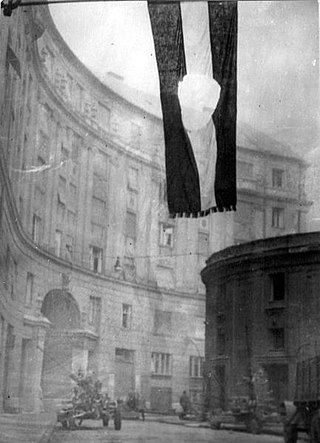
The Hungarian Revolution of 1956, also known as the Hungarian Uprising, was an attempted countrywide revolution against the government of the Hungarian People's Republic (1949–1989) and the policies caused by the government's subordination to the Soviet Union (USSR). The uprising lasted 12 days before being crushed by Soviet tanks and troops on 4 November 1956. Thousands were killed and wounded and nearly a quarter of a million Hungarians fled the country.

Maurice Thorez was a French politician and longtime leader of the French Communist Party (PCF) from 1930 until his death. He also served as Deputy Prime Minister of France from 1946 to 1947.

Alcide Amedeo Francesco De Gasperi was an Italian politician who founded the Christian Democracy party and served as prime minister of Italy in eight successive coalition governments from 1945 to 1953.

Mátyás Rákosi was a Hungarian communist politician who was the de facto leader of Hungary from 1947 to 1956. He served first as General Secretary of the Hungarian Communist Party from 1945 to 1948 and then as General Secretary of the Hungarian Working People's Party from 1948 to 1956.

Mario Scelba was an Italian politician who served as the 33rd prime minister of Italy from February 1954 to July 1955. A founder of the Christian Democracy, Scelba was one of the longest-serving Minister of the Interior in the history of the republic, having served at the Viminale Palace in three distinct terms from 1947 to 1962. A fervent pro-Europeanist, he was also President of the European Parliament from March 1969 to March 1971.

István Dobi was a Hungarian communist politician who was Prime Minister of Hungary from 1948 to 1952 and Chairman of the Presidential Council of the Hungarian People's Republic from 1952 to 1967.

Lajos Dinnyés was a Hungarian politician of the Smallholders Party who served as the first pro-communist Prime Minister of the Second Hungarian Republic from 1947 to 1948.

Ferenc Nagy was a Hungarian politician of the Smallholders Party who served as Prime Minister of Hungary from 1946 until his forced resignation in 1947. He was also a Speaker of the National Assembly of Hungary and a member of the High National Council from 1945 to 1946. Nagy was the second democratically elected prime minister of Hungary, and would be the last until 1990 not to be a Communist or fellow traveler. The subsequent Hungarian prime minister Imre Nagy was unrelated to him.

Béla Miklós de Dálnok, Vitéz of Dálnok was a Hungarian military officer and politician who served as acting Prime Minister of Hungary, at first in opposition, and then officially, from 1944 to 1945. He was the last Prime Minister of war-time Hungary.
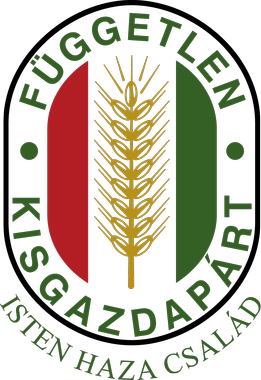
The Independent Smallholders, Agrarian Workers and Civic Party, known mostly by its acronym FKgP or its shortened form Independent Smallholders' Party, is a political party in Hungary. Since the 2002 parliamentary elections, the party has won no seats.
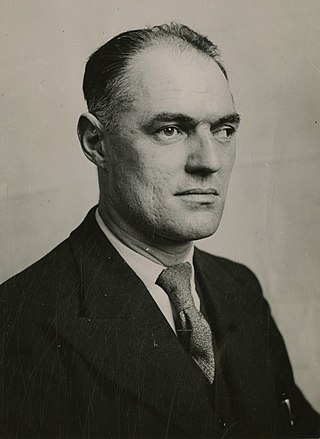
Charles Joseph Tillon was a French metal worker, Communist, trade union leader, politician and leader of the French Resistance during World War II (1939–45).

The Hungarian People's Republic was a one-party socialist state from 20 August 1949 to 23 October 1989. It was governed by the Hungarian Socialist Workers' Party, which was under the influence of the Soviet Union. Pursuant to the 1944 Moscow Conference, Winston Churchill and Joseph Stalin had agreed that after the war Hungary was to be included in the Soviet sphere of influence. The HPR remained in existence until 1989, when opposition forces brought the end of communism in Hungary.
Tripartisme was the mode of government in France from 1944 to 1947, when the country was ruled by a three-party alliance of communists, socialists and Christian democrats, represented by the French Communist Party (PCF), the French Section of the Workers' International (SFIO) and the Popular Republican Movement (MRP), respectively. The official charter of tripartisme was signed on 23 January 1946, following the resignation of Charles de Gaulle, who opposed the draft of the constitution. The draft envisioned a parliamentary system, whereas de Gaulle favored a presidential system.
Legislative elections were held in France on 10 November 1946 to elect the first National Assembly of the Fourth Republic. The electoral system used was proportional representation.
Parliamentary elections were held in Hungary on 4 November 1945. They came at a turbulent moment in the country's history: World War II had had a devastating impact; the Soviet Union was occupying it, with the Hungarian Communist Party growing in numbers; a land reform that March had radically altered the property structure; and inflation was rampant.
Parliamentary elections, which later became known as the "blue-ballot" elections, were held in Hungary on 31 August 1947. The Hungarian Communist Party, which had lost the previous election, consolidated its power in the interim using salami tactics. Communist-led political intrigues had deprived their opposition of its democratically won mandate from 1945, as numerous prominent anti-Communists were removed from office on charges of conspiracy. These conspiracies reached a climax in late May 1947, when the Hungarian Communist Party deposed the democratically elected prime minister Ferenc Nagy in a coup d'état, removing one of the strongest opponents to their rule and crippling the opposition. This weakening of the opposition, combined with a revised electoral law, led to further Communist gains. This would be the last remotely competitive election held in Hungary until 1990.

The Second Hungarian Republic was a parliamentary republic briefly established after the disestablishment of the Kingdom of Hungary on 1 February 1946 and was itself dissolved on 20 August 1949. It was succeeded by the Hungarian People's Republic.
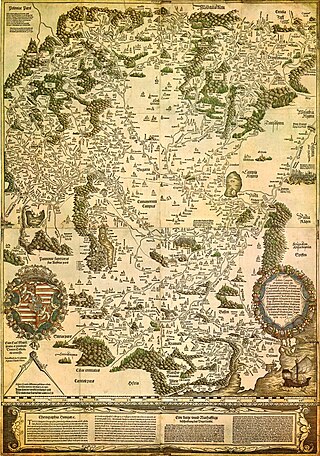
Hungary in its modern (post-1946) borders roughly corresponds to the Great Hungarian Plain in Central Europe.
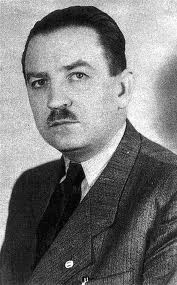
Béla Kovács was a Hungarian politician, who served as Minister of Agriculture from 1945 to 1946 and in the Hungarian Revolution of 1956.
References
- ↑ Dijk, Ruud van; Gray, William Glenn; Savranskaya, Svetlana; Suri, Jeremi; Zhai, Qiang (13 May 2013). Encyclopedia of the Cold War. Routledge. p. 177. ISBN 978-1135923112.
- ↑ Adereth, Maxwell (1984). The French Communist Party: A Critical History (1920-1984), from Comintern to "the Colours of France". Manchester University Press. pp. 144–146. ISBN 978-0-7190-1083-5.
- 1 2 Ginsborg, Paul (2003). A History of Contemporary Italy: Society and Politics, 1943-1988. Palgrave Macmillan. pp. 106–113. ISBN 978-1-4039-6153-2.
- ↑ Ciment, James (27 March 2015). Encyclopedia of Conflicts Since World War II. Routledge. ISBN 978-1-317-47185-1.
- ↑ Corke, Sarah-Jane (12 September 2007). US Covert Operations and Cold War Strategy: Truman, Secret Warfare and the CIA, 1945-53. Routledge. pp. 47–48. ISBN 9781134104130.
- ↑ Cockayne, James (1 October 2017). Hidden Power: The Strategic Logic of Organized Crime. Oxford University Press. ISBN 978-0-19-069481-4.
- ↑ Newark, Tim (27 September 2011). Boardwalk Gangster: The Real Lucky Luciano. Macmillan Publishers. ISBN 978-1-4299-6077-9.
- ↑ Robb, Peter (5 August 2014). Midnight In Sicily: On Art, Feed, History, Travel and la Cosa Nostra. Farrar, Straus and Giroux. ISBN 978-1-4668-6129-9.
- ↑ Valentine, Douglas (1 October 2013). The Strength of the Wolf: The Secret History of America's War on Drugs. Verso Books. ISBN 978-1-78168-338-5.
- ↑ Cockayne, James (1 October 2017). Hidden Power: The Strategic Logic of Organized Crime. Oxford University Press. ISBN 978-0-19-069481-4.
- ↑ Grenville, John Ashley Soames (2005). A History of the World from the 20th to the 21st Century. Psychology Press. p. 514. ISBN 978-0-415-28954-2.
- ↑ Leffler, Melvyn P. (1992). A Preponderance of Power: National Security, the Truman Administration, and the Cold War. Stanford University Press. pp. 157–158. ISBN 978-0-8047-2218-6.
- ↑ Johnson, R. W. (19 March 1981). The Long March of the French Left. Springer Science+Business Media. pp. 30–31. ISBN 978-1-349-16491-2.
- ↑ Evans, Martin; Godin, Emmanuel (21 January 2014). France Since 1815. Routledge. pp. 134–136. ISBN 978-1-4441-7791-6.
- ↑ Williams, Philip M. (1958). Crisis and compromise politics in the Fourth Republic. Longmans. p. 24.
- ↑ "The Communists - Historical events in the European integration process (1945–2014) - CVCE Website". University of Luxembourg.
- ↑ Adereth, Maxwell (1984). The French Communist Party: A Critical History (1920-1984), from Comintern to "the Colours of France". Manchester University Press. pp. 146–147. ISBN 978-0-7190-1083-5.
- ↑ Dijk, Ruud van; Gray, William Glenn; Savranskaya, Svetlana; Suri, Jeremi; Zhai, Qiang (13 May 2013). Encyclopedia of the Cold War. Routledge. ISBN 978-1135923112.
- ↑ Part 2: Communist take-over, 1946-1949 The Institute for the History of the 1956 Revolution.
- ↑ Kenez, Peter (22 May 2006). Hungary from the Nazis to the Soviets: The Establishment of the Communist Regime in Hungary, 1944-1948. Cambridge University Press. p. 133. ISBN 978-0-521-85766-6.
- ↑ Borhi, L. szl¢ (1 January 2004). Hungary in the Cold War, 1945-1956: Between the United States and the Soviet Union. Central European University Press. pp. 116–118. ISBN 978-963-9241-80-0.
- ↑ "The History of the Soviet Bloc 1945–1991 - A CHRONOLOGY - PART 1 - 1947". www.coldwar.hu.
- 1 2 Borhi, L. szl¢ (1 January 2004). Hungary in the Cold War, 1945-1956: Between the United States and the Soviet Union. Central European University Press. p. 118. ISBN 978-963-9241-80-0.